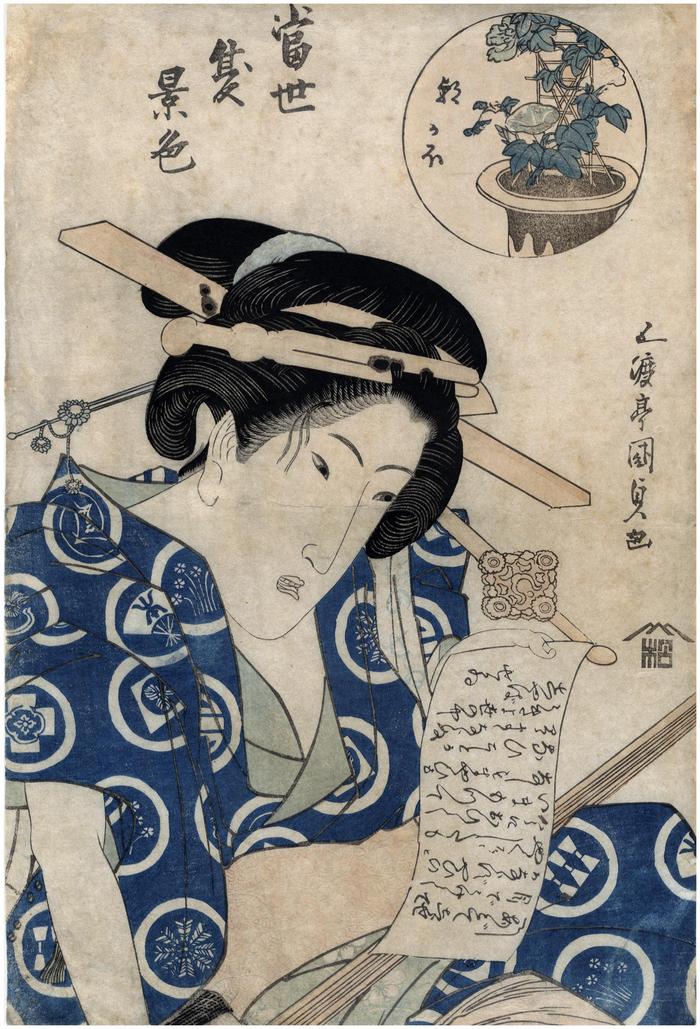Utagawa Kunisada (歌川国貞) / Toyokuni III (三代豊国) (artist 1786 – 01/12/1865)
Morning Glory (Asagao - 朝かほ) from the series Modern Scenes of Summer (Tōsei natsu geshiki - 當世夏景色)
1826
9.5 in x 14.25 in (Overall dimensions) Color woodblock
Signed: Gototei Kunisada ga
五渡亭国貞画
Publisher: Matsumura Tatsuemon
(Marks 311 - seal 03-009)
Museum of Fine Arts, Boston
Waseda University
Hokkaido Museum of Art
Nationaal Museum van Wereldculturen, Leiden (via Ritsumeikan University) - with very fresh colors Sebastian Izzard in his Kunisada's World wrote about the small series that this print comes from. It was based on the success of a previous series that focused on women as images of springtime.
"Kunisada's adoption of a new drawing style in the mid-1820s was followed by his publication of several series featuring half-length portraits of beauties. Of these the 'Modern Views of Spring' is the earliest. It portrays five women from the different social backgrounds, accompanied with a pictorial vignette bordered by a large, stylized Chinese character, the sada of Kunisada's name. The vignettes contain images associated with the New Year... The series is linked to the Yoshiwara... The newly imported Berlin blue is used sparingly throughout the series, indicating that it belongs to the late Bunsei era rather than the early Tempo. The date is confirmed by the fact that these prints are among those collected by Philipp Franz von Siebold, who is thought to have purchased most of them on a visit he made to Edo in 1826." (Izzard, pp. 100-101)
"The success of 'Modern Views of Spring'... led to the publication of a set of five prints depicting beauties of summer. The angular drawing style here becomes more pronounced, as does the length of the face in proportion to the body." (Ibid., p. 102)
This print from the Lyon Collection is from that second set of five prints.
****
Illustrated in The Ear Catches the Eye: Music in Japanese Prints in color on page 170 with the text entry by Matthi Forrer. Their text reads: "A geisha interrupts her shamisen playing to read over the text of her next song.... This series of five prints was designed as a sequel to an earlier, successful series devoted to spring views." This example comes from the collection in Leiden.
****
It should be noted that in a lecture, 'The Poetics of Inscribed Kabuki Actor Prints', viewable on YouTube, by John T. Carpenter said that the three-string shamisen was "the most common instrument of the Yoshiwara brothels as well as kabuki and among geisha."
****
The text reads:
(庵点)あごてしらせて目でうけて かならずやひのとやくそくしたも 今におひていまもつて存?しもまやひもなひことか ヱヽまゝならぬうきよ世の中しやばせかゐ
Matsumura Tatsuemon (松村辰右衛門) (publisher)
beautiful woman picture (bijin-ga - 美人画) (genre)
